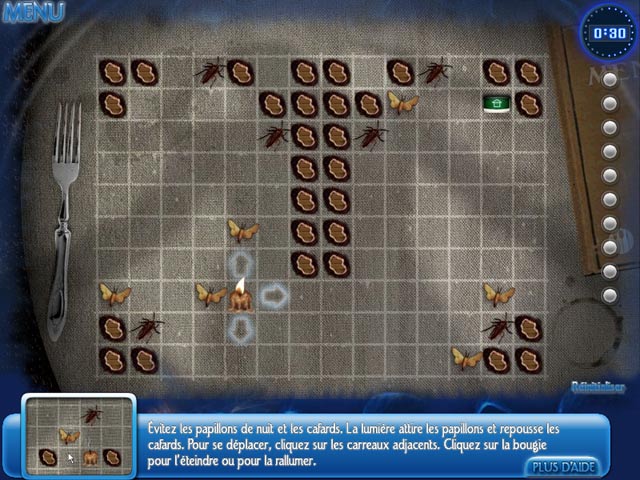

- #HIDDEN SECRETS THE NIGHTMARE FREE CODE#
- #HIDDEN SECRETS THE NIGHTMARE FREE SERIES#
- #HIDDEN SECRETS THE NIGHTMARE FREE FREE#
#HIDDEN SECRETS THE NIGHTMARE FREE FREE#
The following owner attempted to move the home from its original location, but the house tore itself free from its trailer, ran its owner over a cliff to his death and settled less than 200 yards from the Kentucky state line in a graveyard. The next four owners, none of them pure Kentuckians, found themselves driven away for various reasons. Later, Sanderson's wife went insane in the upper floors, leading the Senator to sell the house. The building itself was constructed for a Senator Sanderson using only materials from Kentucky, and went under the enchantment that only pure-blood Kentuckians would be able to live there. Writer Mike Friedrich and artist Jerry Grandenetti introduced the house and explained its origins. The House of Secrets also came to be the name of the actual edifice in which Abel lives.
#HIDDEN SECRETS THE NIGHTMARE FREE SERIES#
The series was 68 ad-free pages, allowing all three portions to be full-length issues. Cancelled as a result of the DC Implosion, it was then "merged" into The Unexpected with issue #189 through issue #199. 1978), with six months passing between issues #140 (February–March 1976) and 141 (August–September 1976). The revival of The House of Secrets, sporting many covers by Neal Adams, Bernie Wrightson and Michael Kaluta, ran through issue #154 (Nov. 1) of the Swamp Thing ongoing series, was to have become an ongoing feature in the series, but only appeared in one issue. The Patchwork Man, a character from (vol. The woman appearing on the cover of this issue was modeled after future comics writer Louise Simonson. The Swamp Thing first appeared in The House of Secrets #92 (July 1971) in a stand-alone horror story set in the early 20th century written by Len Wein and drawn by Bernie Wrightson. In response, the editorship made writers credits standard practice for future publications. That directive was complied with and suddenly the editorship of DC was inundated with complaints from other writers because of Wolfman's special consideration of a printed credit. The series' editor, Gerry Conway explained that the writer's actual surname was Wolfman, and the CCA conceded on the condition that the distinction be made obvious with an explicit writer's credit in the story.
#HIDDEN SECRETS THE NIGHTMARE FREE CODE#
Upon examination, the censor bureau, the Comics Code Authority refused to give the issue its seal of approval since it mentions a wolfman, which was specifically forbidden along with other classic monsters. As part of the framing story, Abel introduces the story by telling a tale told to him by a "wandering Wolfman". The title had an early breakthrough for the mainstream part of the medium: issue #83 had a story, "The Stuff that Dreams are Made of", written by Marv Wolfman. His brother, Cain, hosted The House of Mystery. Now its horror and suspense tales were introduced by a host named Abel, who would also host the satirical comic Plop!. The series was revived three years later with a definite article as The House of Secrets, beginning with issue #81 (Aug.–Sept. Other, lesser continuing features included "Peter Puptent, Explorer" "Dolly and the Professor" "Doctor Rocket" and "Moolah the Mystic".Ĭover of The House of Secrets #92 (July 1971), introducing the Swamp Thing, art by Bernie Wrightson. The "Prince Ra-Man" feature ended in House of Secrets #80 (September–October 1966), the final issue of the series. Prince Ra-Man the Mind-Master bowed in #73 (July–August 1965) and was a Doctor Strange-style "replacement" for Mark Merlin.

The dual-personality supervillain Eclipso ("Hero and Villain in One Man!") was created by Bob Haney and Lee Elias and was introduced in issue #61 (August 1963) and continued to the series' end. In addition to short "one-off" stories, several issues featured the adventures of modern-dress sorcerer Mark Merlin, who first appeared in issue #23 (August 1959). The original Silver Age series ran 80 issues, from November/December 1956 to September/October 1966.


 0 kommentar(er)
0 kommentar(er)
